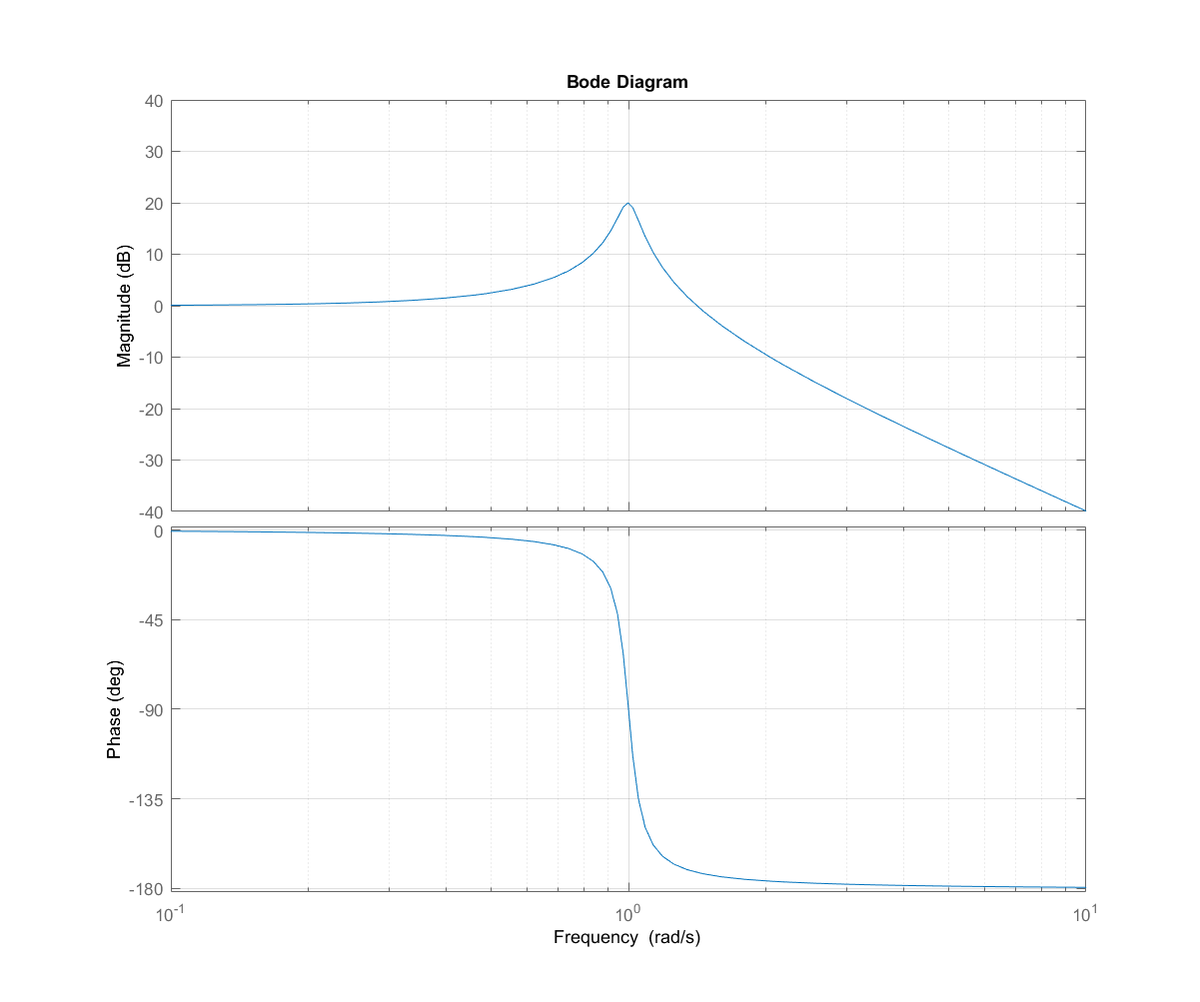Find the steady state response.
Consider the linear time invariant system described by the transfer function,
What is the steady state response to a sinusoidal input, ?
For reference a frequency response plot, called a Bode plot, is shown. Calculations can also be done numerically.

This section requires Javascript.
You are seeing this because something didn't load right. We suggest you, (a) try
refreshing the page, (b) enabling javascript if it is disabled on your browser and,
finally, (c)
loading the
non-javascript version of this page
. We're sorry about the hassle.
To expand on what @Samuel Hansen said in his solution, evaluate the transfer function with s = j ω = j .
P ( s ) = s 2 + 0 . 1 s + 1 1 = − 1 + 0 . 1 j + 1 1 = − j 1 0
Thus, we have a gain of 10 and a phase lag of 90 degrees, corresponding to:
u ′ ( t ) = 1 0 s i n ( t − 2 π )